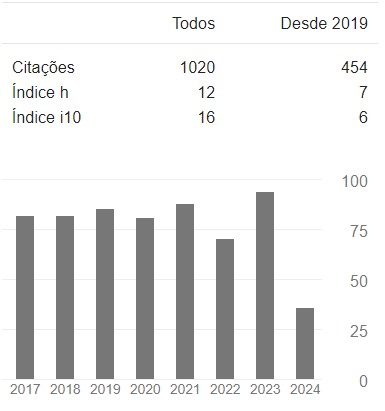Openly exposed closets: homoerotism and resistance in Guilherme de Melo’s fiction
DOI:
https://doi.org/10.5433/1678-2054.2010v18p78Keywords:
Homoerotism, Contemporary portuguese fiction, Guilherme de MeloAbstract
Recovering the known closet’s metaphor, as a revealing sign of a homosexual attitude and epistemology extolled by Eve Sedgwick (Epistemology of the Closet) and the perception of a resistance in some fictional manifestations pointed by Alfredo Bosi (Literatura e Resistência), we propose a reading of the Portuguese writer Guilherme de Melo’s fiction, through his novel O que houver de morrer (1989), underlining the homoerotic theme, its presence in the literary portuguese scene and the emergency of a critical broach of this corpus.Downloads
References
BOSI, Alfredo. 2002. Literatura e resistência. São Paulo: Companhia das Letras.
CALVÃO, Dalva. 2008. Narrativa biográfica e outras artes: reflexões sobre escrita literária e criação estética na “Trilogia da mão”, de Mário Cláudio. Niterói: EdUFF.
COSTA, Jurandir Freire. 2002. A inocência e o vício: estudos sobre o homoerotismo. Rio de Janeiro: Relume Dumará.
GAY, Peter. 2000. A experiência burguesa: da rainha Vitória a Freud. São Paulo: Companhia das Letras.
GUSMÃO, Dina. 2002. Guilherme de Melo: um homem sem pressa. Alpiarça: Garrido.
INÁCIO, Emerson da Cruz. 2002. “Homossexualidade, homoerotismo e homossociabilidade: em torno de três conceitos e um exemplo.” Rick Santos & Wilton Garcia, orgs. A escrita de Adé: perspectivas teóricas dos estudos gays e lésbic@s no Brasil. São Paulo: Xamã & NCC/SUNY. 59-70.
INÁCIO, Emerson da Cruz. “Outros barões assinalados: a emergência do discurso gay na produção literária contemporânea.” Anais do VIII Congresso Luso-Brasileiro de Ciências Sociais (Coimbra). Disponível em http://www.ces.uc.pt/lab2004/inscricao/pdfs/grupodiscussao2/EmersonInacio.pdf. Acesso em 29 maio 2010.
LOURENÇO, Eduardo. 1991. “Da literatura como interpretação de Portugal.” O labirinto da saudade: psicanálise mítica do destino português. Lisboa: Dom Quixote. 79-118.
LOURENÇO, Eduardo.1994. O canto do signo. Lisboa: Presença.
LUGARINHO, Mário César. 2001. “Dizer o homoerotismo: Al Berto, poeta queer.” Lélia Parreira-Duarte et al, orgs. Encontros prodigiosos. Belo Horizonte: Editora da UFMG / PUC-Minas. 852-863.
MELO, Guilherme de. 1982. Ser homossexual em Portugal. Lisboa: Relógio d’Água.
MELO, Guilherme de. O que houver de morrer. Lisboa: Editorial Notícias, 1989.
MELO, Guilherme de. 2002. Gayvota: um olhar (por dentro) sobre a homossexualidade. Lisboa: Editorial Notícias.
MENDONÇA, Fátima. 2002. “O conceito de nação em José Craveirinha, Rui Knopfli e Sérgio Vieira.” Via Atlântica (São Paulo) 5: 52-66.
MENDONÇA, Fernando. 1997. Recensão crítica a “Um rio sem pontes”. Colóquio Letras (Lisboa) 143/144: 281.
SEDGWICK, Eve Kosofsky. 1985. Between men: English Literature and Male Homosocial Desire. New York: Columbia U P.
SEDGWICK, Eve Kosofsky. 2003. Epistemologia do armário. Lisboa: Angelus Novus.
SEIXO, Maria Alzira. 1986. A palavra do romance: ensaios de genologia e análise. Lisboa: Livros Horizonte.
Downloads
Published
How to Cite
Issue
Section
License
Authors who publish in this journal agree to the following terms:
a) The authors retain the copyright and grant the journal the right of first publication, the work being simultaneously licensed under the Creative Commons Attribution-NonCommercial 4.0 International License, allowing the sharing of the work with acknowledgment of the authorship of the work and initial publication in this journal.
b) Authors are authorized to assume additional contracts separately, for non-exclusive distribution of the version of the work published in this journal (eg, publish in an institutional repository or as a book chapter), with acknowledgment of authorship and initial publication in this journal.
c) Authors are allowed and encouraged to publish and distribute their work online (e.g. in institutional repositories or on their personal page) after the editorial process, as this can generate productive changes as well as increase impact and citation of the published work (See The Effect of Open Access).
d) The authors of the approved works authorize the journal to, after publication, transfer their content for reproduction in content indexers, virtual libraries and the like.
e) The authors assume that the texts submitted for publication are of their original creation, taking full responsibility for their content in case of any objection by third parties.


















